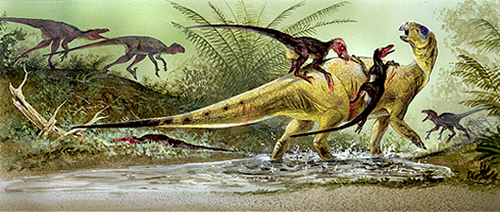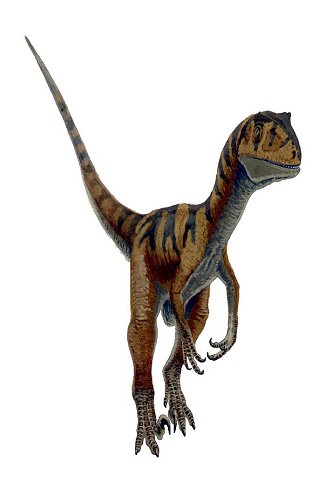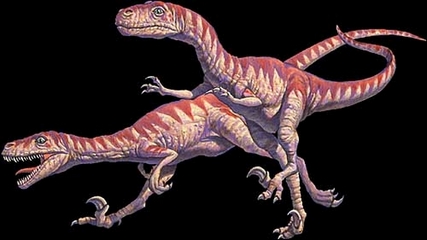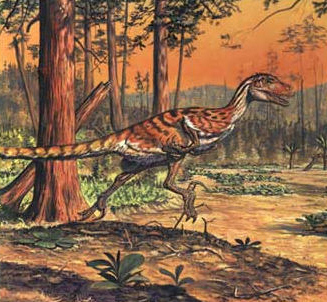Deinonychus antirrhopus - North American Dinosaurs
Homepage > North American Dinosaurs - Deinonychus antirrhopus
(die-non-ee-kus)
"terrible claw"
Describer
Also Known As --
Type of Species
Order Saurischia
SubOrder Theropoda
InfraOrder Deinonychosauria
Micro-Order --
Family Dromaeosauridae
Size 10 feet (3 meters) long
Period Early Cretaceous, about 110 million years ago
Fossilsite North America
Diet Carnivore
 Deinonychus
lived during the Early Cretaceous Period, about 110 million years ago,
in what is now North America. Deinonychus belongs to a family of dinosaurs
called dromaeosaurs. Deinonychus was a fierce carnivore equipped with
specialized weaponry. It had three sharply clawed toes. The "terrible
claw" on the second toe of each foot was a highly flexible weapon.
Deinonychus
lived during the Early Cretaceous Period, about 110 million years ago,
in what is now North America. Deinonychus belongs to a family of dinosaurs
called dromaeosaurs. Deinonychus was a fierce carnivore equipped with
specialized weaponry. It had three sharply clawed toes. The "terrible
claw" on the second toe of each foot was a highly flexible weapon.
Dromaeosaurus shared the same characteristics a lightly built skull with sharp backwardly curved teeth, elongated arms and hands with sharp claws, and an extraordinary sickle-like second toe claw which was carried raised off the ground to protect the sharp point. Deinonychus probably had keen vision and their brains were relatively large for a dinosaur.

By hunting in groups, members of a Deinonychus pack could have brought down dinosaurs much larger than themselves. In fact, the bones of several individuals of Deinonychus have been found with the skeleton of a large herbivore dinosaur, called Tenontosaurus. Deinonychus was highly specialized for swift movement and savage attack. With its "terrible claw" flicked forward it slashed its prey with one foot while standing on the other. This kind of behavior required good coordination, excellent eyesight and a high level of energy.
Like many other dinosaurs, Deinonychus had a stiffened tail about three quarters of its length. This stiffening allowed the tail to be controlled by a few large muscles that connected to the hips and hindlimbs. It helped Deinonychus to make rapid changes in direction suddenly while running. Just like the tail on a modern cheetah assists the cheetah to make rapid changes in direction.
Deinonychus antirrhopus Paleo Gallery
Click on images to see more art from artist!


